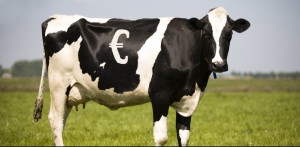The CAP grew out of the aftermath of the Second World War during and after which many in Europe suffered from a scarcity of food. The leaders of Europe were determined to establish the conditions for a secure supply of food and free-flow exchange of food products throughout Europe. Thus was born a Common Agriculture Policy based on increasing the productivity of farming, creating a stable market with reasonable prices, and a fair living standard for rural farming communities. Farming and rural living were from the beginning of the policy intertwined. A critical component of the CAP was the EU’s support of high prices.
Almost as soon as it was implemented, the cost of the CAP became a problem. With the policy providing price supports, the more the farmer produced, the more income the farmer received. There was no incentive to be efficient. By 1985 the CAP expenditures represented over 70% of the total EU budget, but that has fallen so that by 2014 it represented about 39% of the budget, despite the addition of 17 countries in the EU since 1985. It should also be noted that agriculture accounts for less than 2 percent of the EU’s gross domestic product and roughly 5 percent of employment..
Over the more than 50 years of the CAP, a number of significant reforms were instituted. Critically, in the 1990s the CAP changed from a price or market support system to one based on direct payments to farmers and increasingly those payments have required the farmers to develop and implement practices to protect the environment. In part as a result of the 1992 Rio Earth Summit, sustainable development became a mainstay of the CAP system. More and more, the emphasis for sustainable development focuses on climate change, and ways to reduce agriculture’s greenhouse gas emissions. Some further ideas to explore on the CAP
Some further ideas to explore about the CAP
Currently, is there food scarcity in the EU? If not, how does this affect the rationale for the CAP?
Since agriculture accounts for only 5% of employment, why does it get so much support for the CAP? Create an argument that some other sector besides agriculture that has much higher employment deserves financial support comparable to what agriculture gets.
More and more people are moving to cities and urban communities (now at 50% of world population and expected to be close to 70% by 2050). What impact will this development have on farming and rural communities?
Sources
European Commission, Agriculture and Rural Development: The Common Agricultural Policy after 2013. ec.europa.eu/agriculture/cap-post-2013/
European Commission, CAP expenditure in the total EU expenditure (April 2016). ec.europa.eu/agriculture/cap-post-2013/graphs/graph1_en.pdf
Stratfor, Understanding the EU Common Agricultural Policy (18 April 2014). www.stratfor.com/analysis/understanding-eu-common-agricultural-policy



No comments yet, add your own below